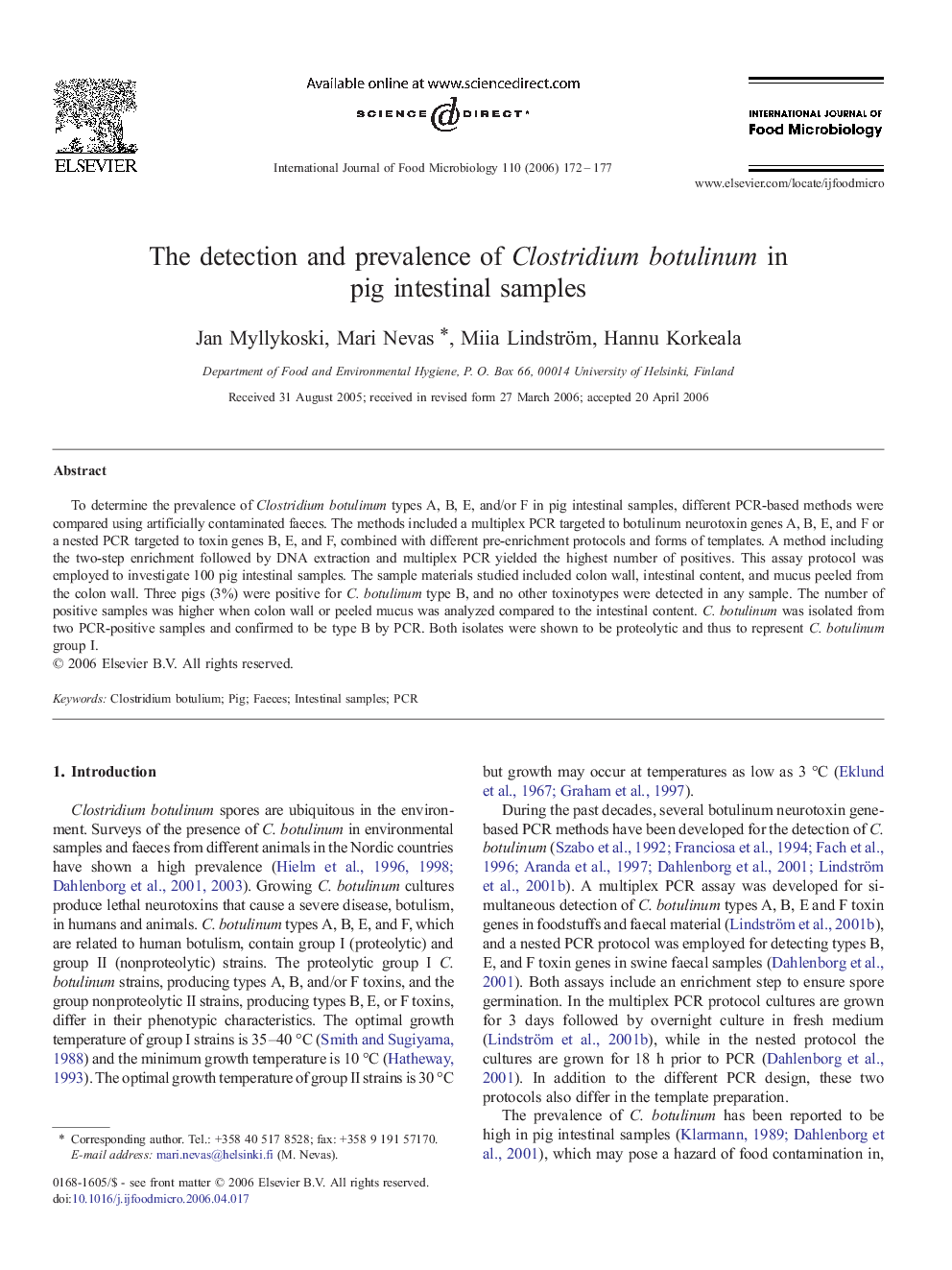| Article ID | Journal | Published Year | Pages | File Type |
|---|---|---|---|---|
| 4370120 | International Journal of Food Microbiology | 2006 | 6 Pages |
To determine the prevalence of Clostridium botulinum types A, B, E, and/or F in pig intestinal samples, different PCR-based methods were compared using artificially contaminated faeces. The methods included a multiplex PCR targeted to botulinum neurotoxin genes A, B, E, and F or a nested PCR targeted to toxin genes B, E, and F, combined with different pre-enrichment protocols and forms of templates. A method including the two-step enrichment followed by DNA extraction and multiplex PCR yielded the highest number of positives. This assay protocol was employed to investigate 100 pig intestinal samples. The sample materials studied included colon wall, intestinal content, and mucus peeled from the colon wall. Three pigs (3%) were positive for C. botulinum type B, and no other toxinotypes were detected in any sample. The number of positive samples was higher when colon wall or peeled mucus was analyzed compared to the intestinal content. C. botulinum was isolated from two PCR-positive samples and confirmed to be type B by PCR. Both isolates were shown to be proteolytic and thus to represent C. botulinum group I.
